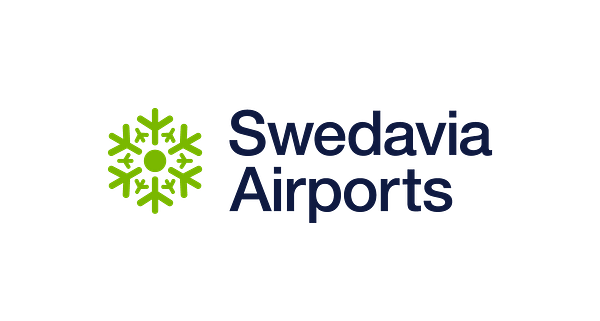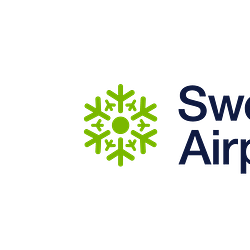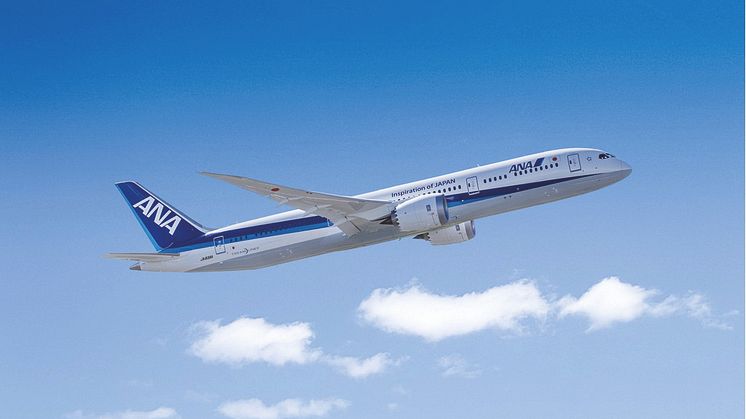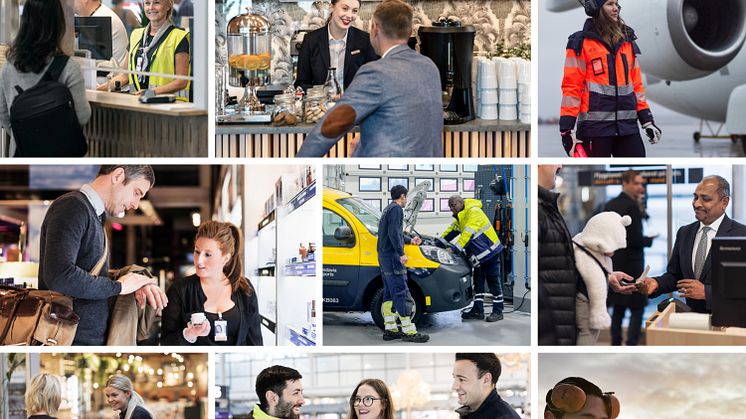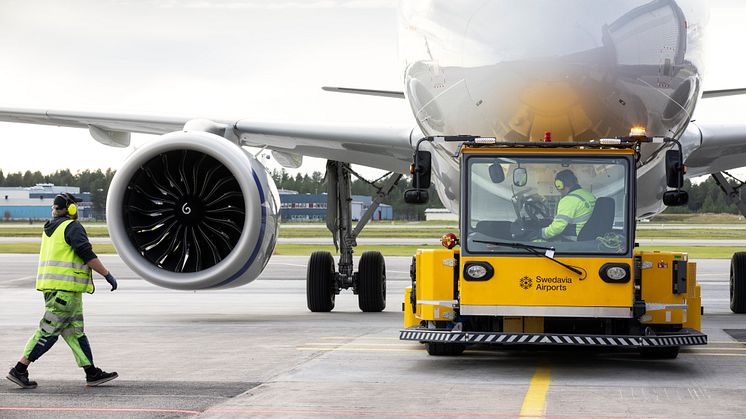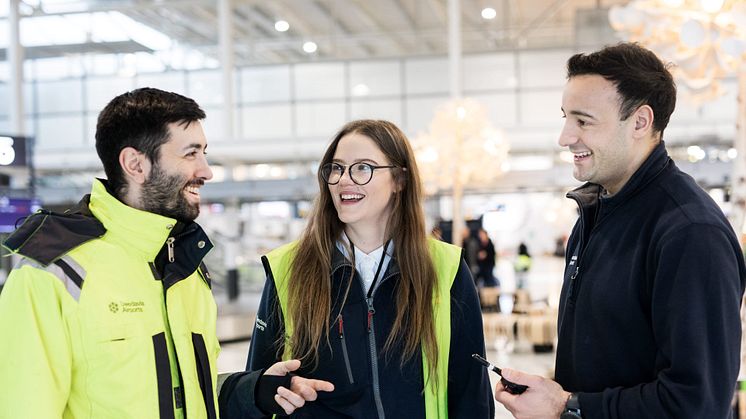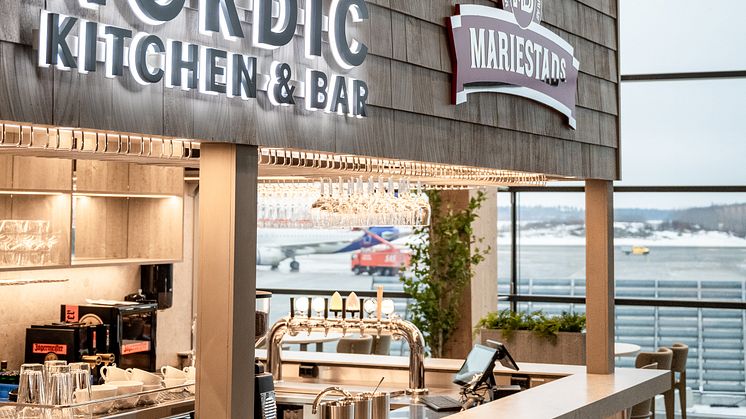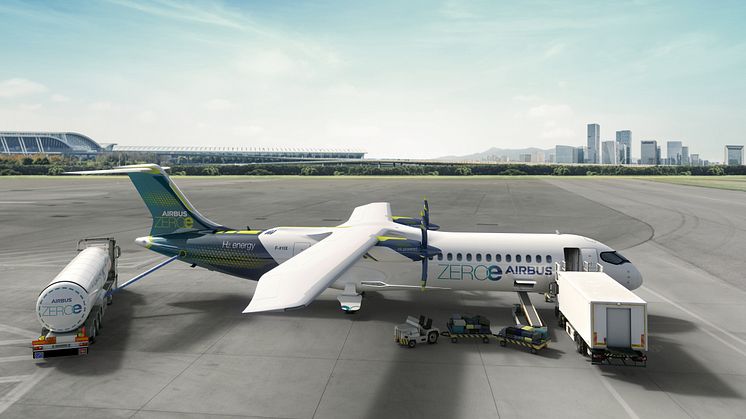
Press release -
Swedavia signs cooperation agreement with Airbus, Avinor, SAS and Vattenfall to promote the development of hydrogen-powered aviation in Sweden and Norway
Swedavia, Airbus, Avinor, SAS and Vattenfall have signed a Memorandum of understanding (MoU) to work together to develop infrastructure for hydrogen aviation at airports in Sweden and Norway. The goal of the collaboration is to, through a preliminary study on hydrogen, develop a framework and review the conditions for a possible rollout of hydrogen-powered aviation in both countries. The framework will cover the entire chain, from production and transport to storage and hydrogen refuelling at commercial airports. Test flights are already being conducted with hydrogen-powered aircraft and the goal is to achieve commercial viability for larger hydrogen aircraft by 2035.
The use of hydrogen to fuel the aviation industry of the future, together with biofuel and battery-electric aircraft, is expected to contribute to a significant reduction in the total carbon dioxide emissions from aviation, and the feasibility study on the hydrogen infrastructure needed for the aviation industry is the first of its kind, covering two countries and over 50 airports. The feasibility study will run for one year with the possibility of extension and will include an investigation of how fast hydrogen-powered aviation can be developed. It will also look at scenarios for the number of movements with hydrogen-powered aircraft and the volume of hydrogen needed, which must be stored at the airports.
"We are very excited to be part of a larger partnership on the role of hydrogen in aviation together with Airbus, Avinor, SAS and Vattenfall. Swedavia, Avinor and SAS already have established successful collaborations in fossil-free aviation, and it is therefore exciting that Airbus, with its extensive knowledge of hydrogen-powered aircraft through its ZeroE initiative, and Vattenfall, with its expertise in electricity and energy production, are joining us in a more in-depth collaboration. Hydrogen is expected to gradually become an increasing part of the aviation industry's fuel mix in the future and will therefore have an increasing effect on the infrastructure and planning of our airports. This partnership is a major and important step towards fossil-free aviation in the Nordic region and will further strengthen Swedavia's role as a front-runner in fossil-free aviation, while at the same time taking another important step in the transition within the aviation industry," says Jonas Abrahamsson, Swedavia's president and CEO.
The collaboration is built on the expertise and knowledge of all five partners, as well as a shared vision to move towards fossil-free aviation. The hope is that it will lead to an improved ecosystem for hydrogen aviation at Swedish and Norwegian airports by investigating what will be required in terms of operations, infrastructure, maintenance and refuelling needs in a northern region with long distances between population centres, where aviation plays an essential role in enabling work, commuting, travel and accessible infrastructure. By bringing together partners from the entire value chain with competencies that cover all aspects of aviation, the collaboration aims to create an overall picture of the conditions required to enable the transition to hydrogen-powered aviation.
The switch to hydrogen-powered aviation is a complex process and will require airports to adapt to new procedures linked to refuelling, safety and fire protection, as well as the handling of liquid hydrogen. The infrastructure will also need to be adapted due to the need to store hydrogen and, potentially, to enable the production of hydrogen at the airports or in close proximity to the airports.
As an airport operator, Swedavia works continuously to adapt our airports for fossil-free air travel through new infrastructure, for example, through the installation of new charging stations for electric aircraft. Hydrogen is a crucial part of the climate transition that is needed in the aviation industry, as it results in zero carbon dioxide emissions if it is produced from renewable electricity and the only “waste” product is water vapour. Hydrogen-powered aircraft also have the potential to replace fossil-fuel powered aircraft over longer distances. Hydrogen is therefore a natural part of Swedavia's strategy and the sustainable aviation projects it undertakes to achieve climate neutrality.
Hydrogen-powered aircraft
Liquid hydrogen can be produced through water electrolysis, where electrical energy is converted into chemical energy (and eventually back to electrical energy) and stored in the energy carrier hydrogen. In addition, liquid hydrogen can be produced using renewable energy sources.
Hydrogen holds almost three times the energy per kg than Jet-A1 but is less energy-dense per litre in terms of volume, which will change the conditions for storing the fuel in the aircraft.
Read more about the work with the conversion to hydrogen here: Low-carbon aviation | Airbus
Topics
Categories
Swedavia is a group that owns, operates and develops 10 airports throughout Sweden. Our role is to create the connectivity that Sweden needs to facilitate travel, business and meetings. Satisfied and safe travelers are the foundation of Swedavia's business. Swedavia is a world leader in the development of airports with the least possible climate impact. Since 2020, Swedavia's own airport operations have been fossil-free at all ten airports. The group's turnover in 2022 was approximately SEK 4.8 billion and approximately 2,400 employees.
